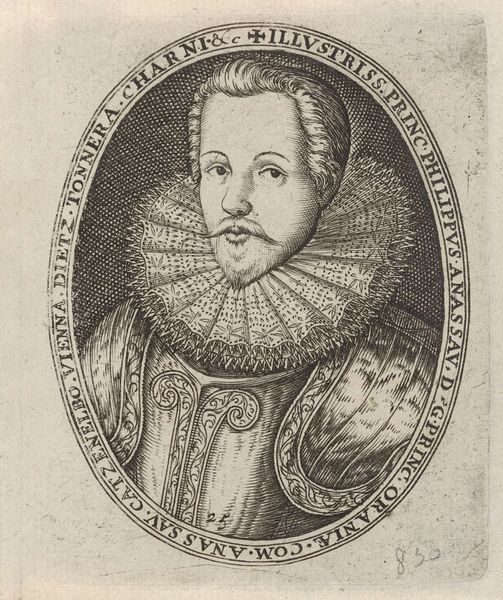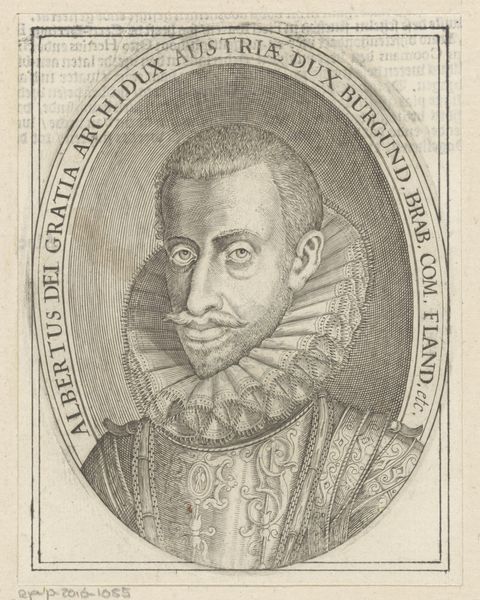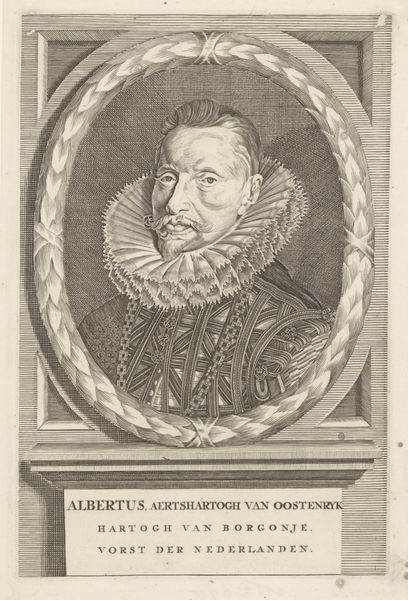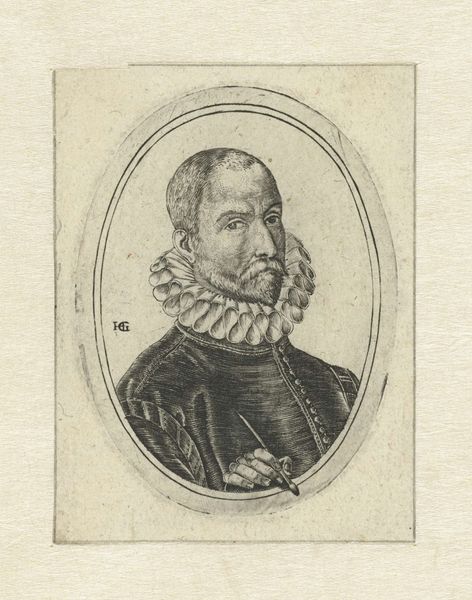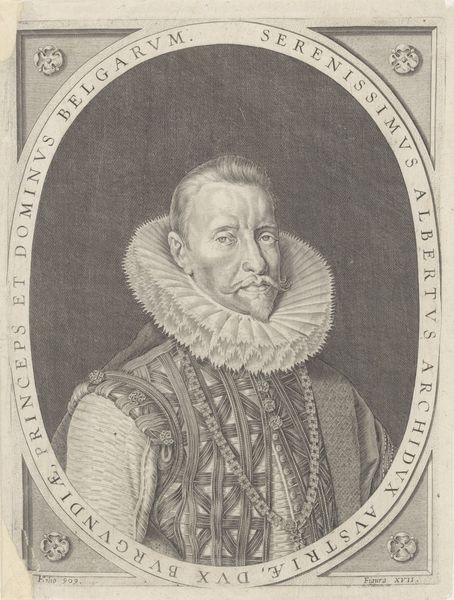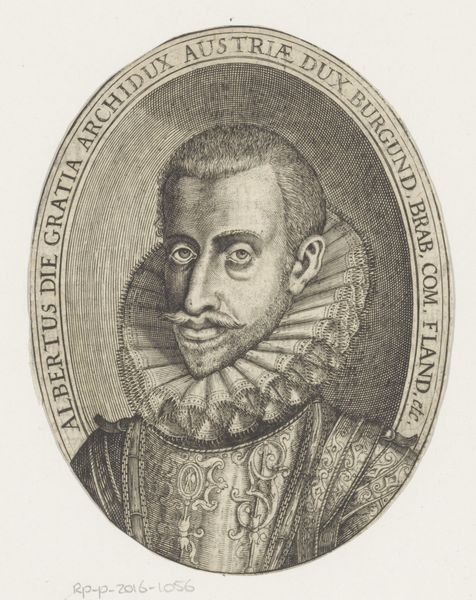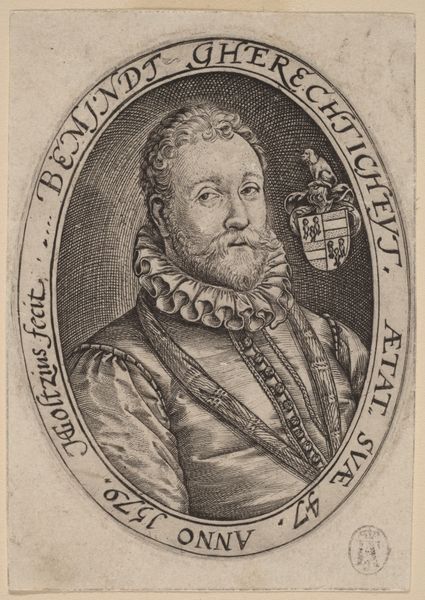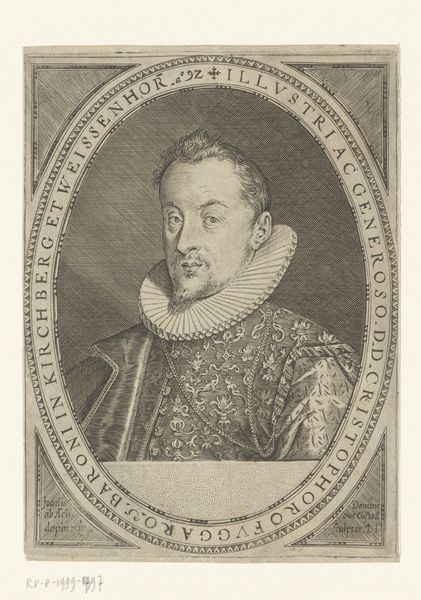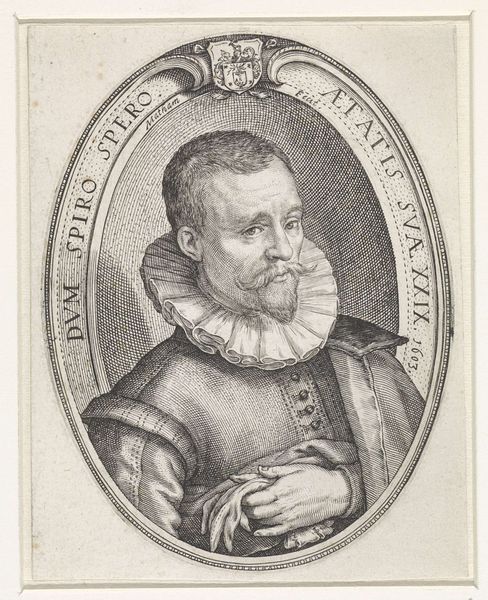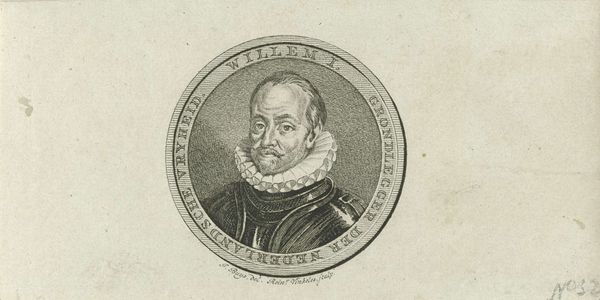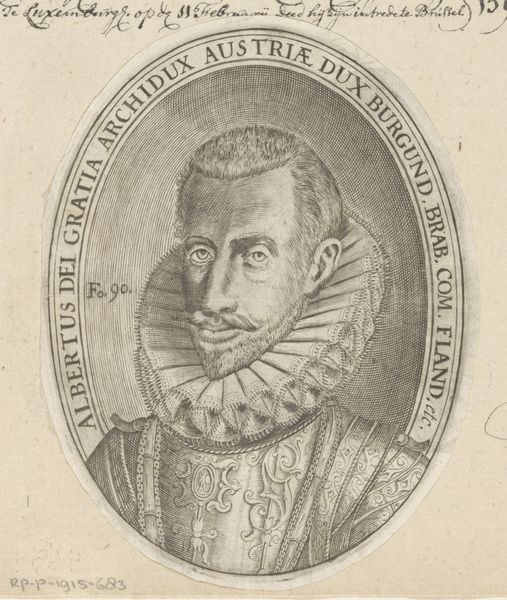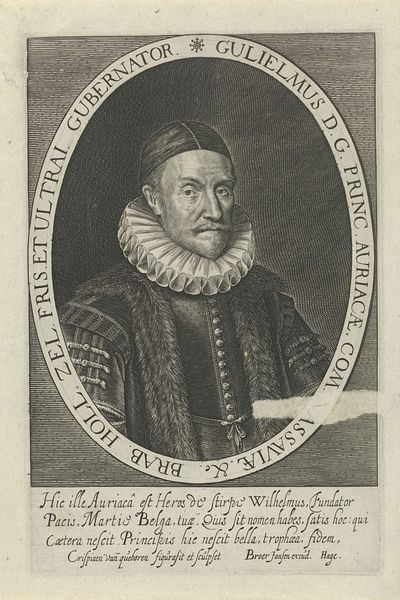
engraving
#
portrait
#
old engraving style
#
mannerism
#
engraving
Dimensions: height 52 mm, width 37 mm
Copyright: Rijks Museum: Open Domain
Editor: This is an engraving by Hendrick Goltzius, "Portrait of an Unknown Man, thought to be Jan van Heussen(?)," dating from 1579-1584. It's a fairly small portrait, oval-shaped, but the sitter's face has a very commanding presence. How do you interpret the inscription around the image within its social and historical context? Curator: Well, the inscription "FORTVNE EST TELLE" followed by "AET. SV. 27" provides an interesting point of departure. The first inscription can be roughly translated from Latin and French as ‘Fortune is such,’ hinting that the subject's life, at 27, has been determined by fate or perhaps luck. I’d immediately want to know, in the context of 16th-century Europe, what forces—societal, political, religious—were at play shaping individual identity and social mobility. Was "fortune" available to everyone? Editor: That's a great point! The very idea of "fortune" must have meant different things depending on your place in society. I'm curious about the deliberate choice of words by Goltzius to indicate it in Latin, rather than the more popularly spoken Dutch. Curator: Absolutely. By choosing Latin, Goltzius deliberately elevates the portrait to a sphere of the learned and elite, a powerful signal about the subject's social standing and ambitions, while subtly commenting on the exclusivity of opportunity in that period. Consider how dress, like that elaborate ruff, functions as a visual signifier, reinforcing this social narrative. Is he truly in control of his destiny or just acting his part in it? Editor: It is fascinating how many levels of meaning an image can contain! This has certainly made me think about portraits from that era in a different way, and who actually benefited from ‘fortune’. Curator: Indeed. This little engraving opens up a much wider discussion about privilege, power, and the construction of identity within a specific historical framework.
Comments
No comments
Be the first to comment and join the conversation on the ultimate creative platform.
